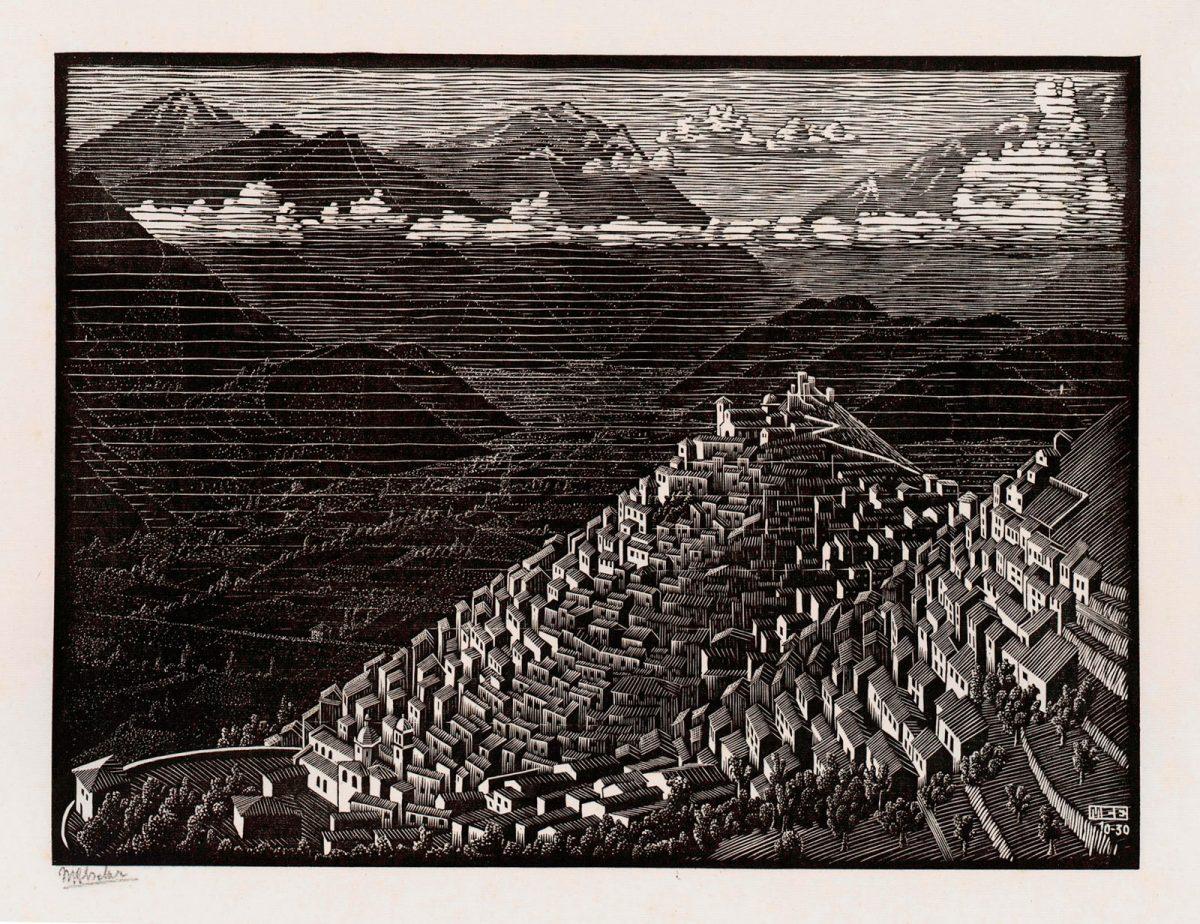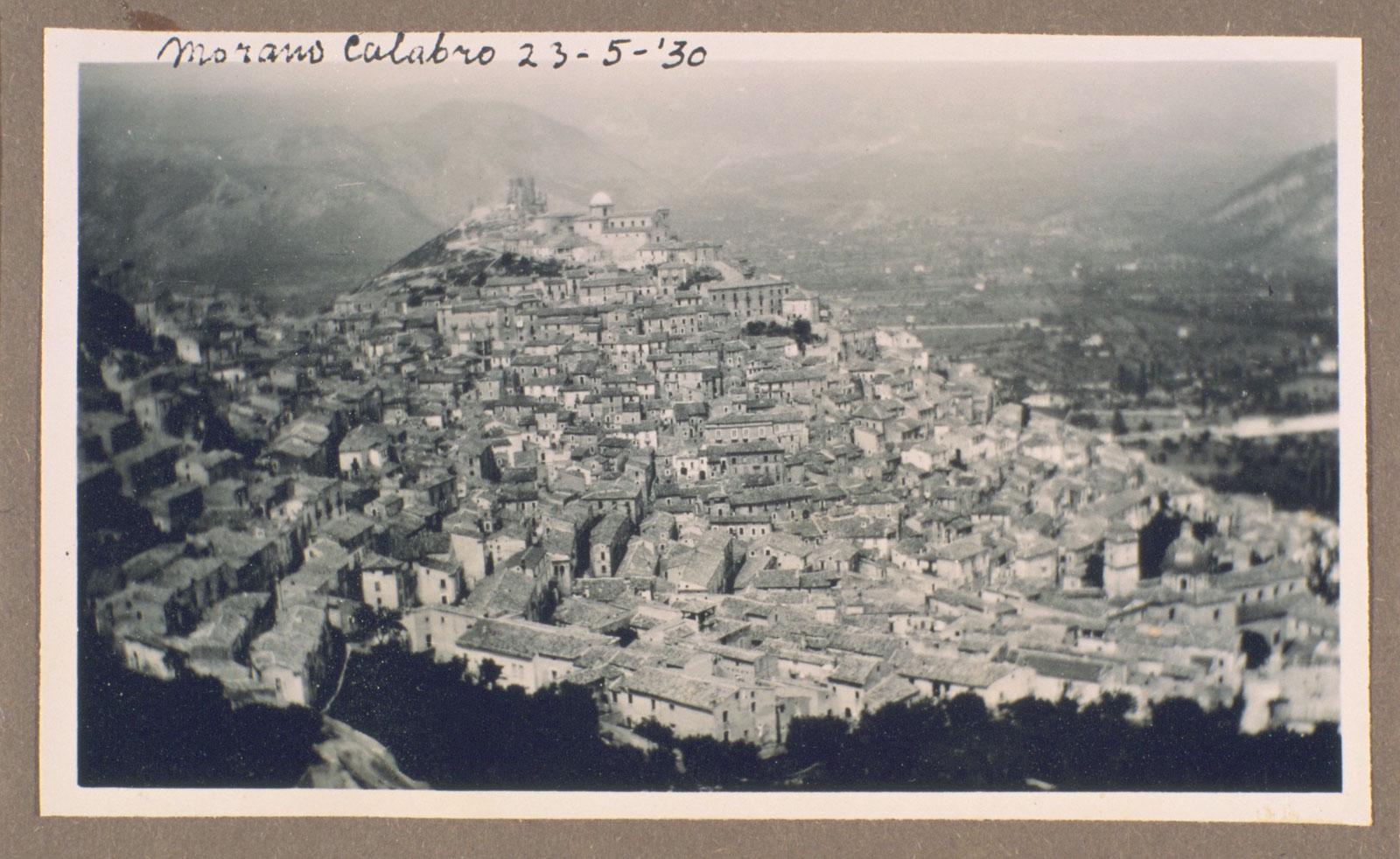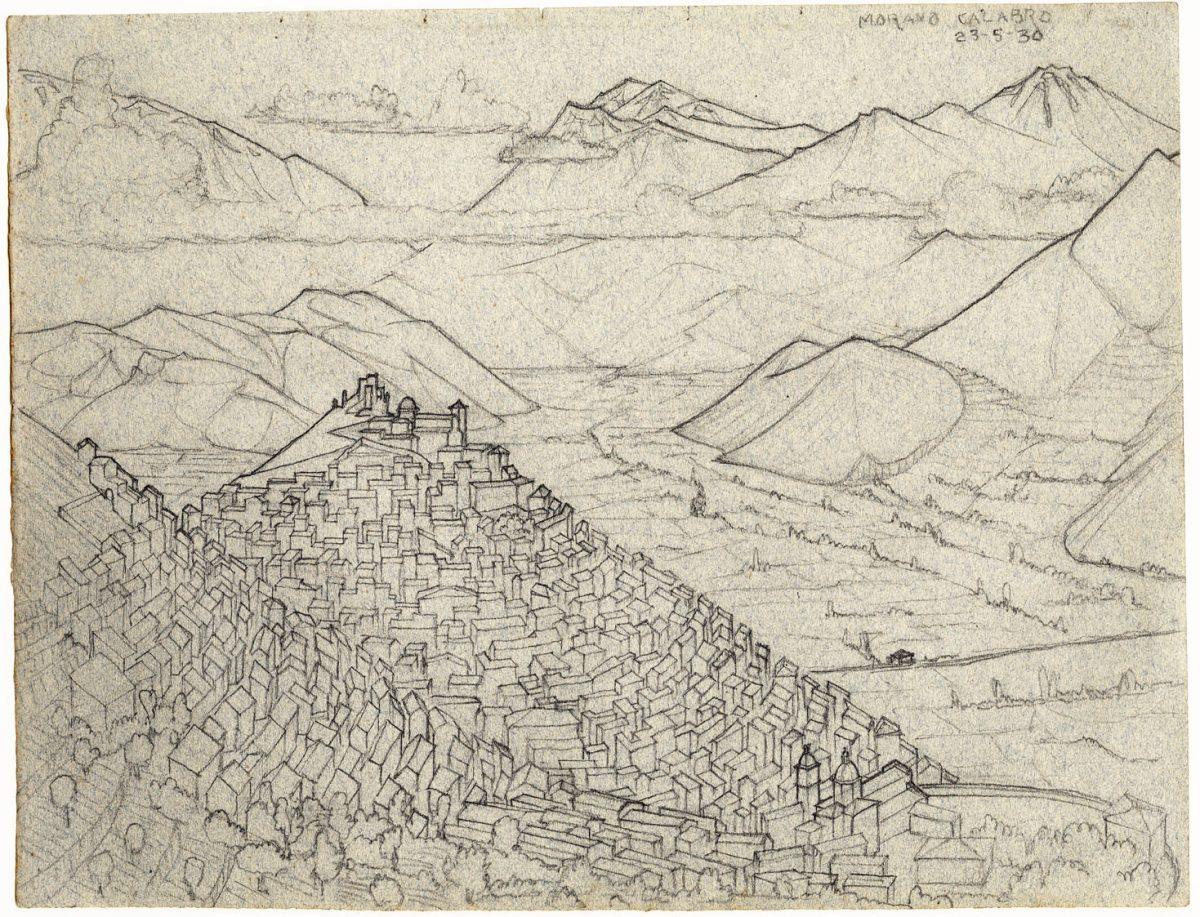
Escher not only observed the countryside, he was also a keen walker. When he first arrived in Italy, Escher spent every spring undertaking long journeys through different parts of the country. In a letter to his friend Bas Kist, he remarked that he needed these breaks to recover from his annual exertions. He undertook long journeys on foot through hitherto unspoilt regions such as Abruzzi and Calabria in Southern Italy. Escher remained a keen walker throughout his life, although he later contented himself with one walk a day from his home in Baarn. He never lost his love of nature, and the countryside continued to inspire him to create new prints, such as Three Worlds (1955) and Rippled Surface (1950).

In 1930, he and two friends, accompanied by a mule, embarked on a journey through Campania and Calabria in Southern Italy. In customary fashion, he made drawings of the places he visited, possibly to be incorporated into later compositions. On 23 May 1930, they reached the small town of Morano, nestled between the mountains. We are able to re-trace Escher’s steps, because he always kept a diary of his journey and route. He also made a point of dating his drawings and prints. One of his Italian photo albums also contains a photograph of Morano. It is believed that this photograph was taken from the same spot as his drawing. There are striking similarities.

However, on closer inspection, Escher's woodcut of Morano, dated October 1930, has one particularly striking detail. The mountain is shown in mirror image! All three works depict the mountain as a snail's shell nestled atop this little Italian town. All three representations are fairly detailed. The photograph captures a hazy day, with light mist in the valley; the drawing also depicts thin strands of clouds; in the print, the mist has been transformed into fine, horizontal lines. It may seem like a simple technique, but is in fact extremely difficult to produce such an intricately detailed and faultless woodcut.

As the name suggests, a woodcut is a carving out of a thin piece of wood, known as a woodblock. In olden days, thicker pieces of wood were used. The block was so thick, that it could be carved on both sides. Escher is also believed to have applied this technique. A woodcut is a common form of relief printing, that is to say that everything that is carved out of the wood becomes a white line when printed, and everything that remains takes on the colour of the ink. Escher's preferred medium was black ink on white paper, although he also used colour in some of his works.
Furthermore, and this is particularly interesting in relation to his print Morano, Calabria, all of Escher’s prints are the mirror image of his woodblocks! Your art teacher at school probably encouraged you to experiment: cut a simple shape, such as a house, out of a piece of linoleum and place a little tree alongside it, on the left. Apply a little ink and print the block. What do you see when you remove the sheet of inked linoleum? …. Precisely, the tree is now on the right!
Map is loading...
This leads us to an interesting question. Did Escher make a silly mistake when he created his woodcut? Did he accidentally carve out the image of the mountain in the wrong place? The answer is a resounding “No”. He was too great an artist and craftsman to make a beginner mistake. This work of art captures a moment in time, a feeling, a specific landscape. Escher wanted to share this experience with us. Is reality important? Of course it is. It inspires us, but it should not to be followed slavishly. He reversed reality so that he could enhance the intensity, allowing us to share in the amazing experience of a young man from the notoriously flat plains of the Netherlands as he first encounters Morano and the mountainous landscapes of Italy.
